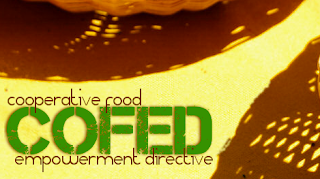Because of the sensational claims made on both sides of the GMO debate, I decided to contact Associate Professor Scott Glenn, from the University of Maryland, College of Agriculture and Natural Resources, a professor I've had the pleasure of learning from. His research and teaching focuses on the biology and management of perennial weeds and his perspective on conventional farming methods has helped me understand the merit in arguments for and against the innovation. Glenn explained:
"Roundup Ready® Alfalfa was deregulated (approved) [in April 2004] but shortly thereafter, several activist groups took [Monsanto and Forage Genetics International] to court stating that the pollen from the GE alfalfa would contaminate organically grown alfalfa. There was a court decision to have further scientific studies to determine if this was a valid issue. Recently, the results of those studies have been released and they indicate that there is no valid scientific evidence to suggest that this would be a problem. Furthermore, if contamination does occur it would be at an extremely low level and, according to a recent ruling, that alfalfa crop would not lose its status as organically grown.
Alfalfa is a perennial forage crop that is primarily cross pollinated. All producers of alfalfa as a forage (organic and conventional) want to harvest alfalfa (including grazing) in bud to early bloom, so if managed right it should not be producing pollen. However, sometimes due to poor management or bad conditions some pollen may be produced. However, the only time those genes would be incorporated in to the genetic makeup of non-Roundup Ready alfalfa is if that alfalfa was allowed to fertilize and go to seed. This could take place in alfalfa that is grown in the wild (very rare, but definitely not part of an organic system) or during the production of commercial seed. Commercial seed production (both organic and conventional) is grown under very closed, highly monitored conditions. Major precautions are taken to prevent extraneous pollen from fertilizing the cultivars of alfalfa that they are producing. There are strict protocols in place such as not having any other alfalfa fields (organic or conventional) within a specific area ('pollen-free zone') surrounding the alfalfa seed field."
So the case, as it has been presented, against GE alfalfa is not scientifically strong enough to limit or eliminate its use and Montsanto does not intend to persecute accidental cross-contaminations but perhaps the devil isn't in the details of this one. Perhaps the greenies, who may disown me after this post, need to broaden the argument, re-organize and out-innovate. What I mean is, the organic opposition comes across as anti-progress and innovation, and if that is the case, we're not going to win much support from the conventional side or even the civilian masses. Instead of putting our energy into the fight against a certain seed, let's put it into the race for a solution and accept the fact that we may need to bend a little here and there to find it. Isn't the bigger problem here the rampid use of products containing the herbicide glyphosate and the effect that has on everyone and everything?













